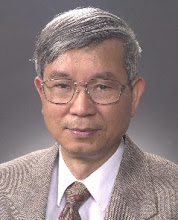CP Yeh 10/4/2009
有關台灣是否是「無主之地」在此提出一點另類思考。
既然要提1895的「馬關條約」和1951年的「舊金山和約」,何不也提一下1895年的「台灣民主國」。
台灣民主國於1895年5月23日宣佈獨立,5月25日舉行建國大典。自那天起,台灣已與清國(中國)切斷關係,成為一個獨立自主的國家,所以日本軍於6月4日在鹽寮登陸的土地是「台灣民主國的領土」,而不是「大清帝國的台灣省」。因為日清兩國所訂的「馬關條約」與獨立自主的「台灣民主國」無關,所以日軍進佔台灣的軍事行動是「侵略」台灣民主國,而不是「接收」大清所割讓的土地。
既然是「民主國」,台灣的主權便是屬於全體台灣人民。既然「民主國」的土地是被日本從主權所有人的手中搶去,日本宣佈放棄,台灣當然是應該歸還給原有的主權所有人,也就是台灣人民。這是理所當然之事,怎麼會是「地位未定」呢?
面對日本的侵略,台灣人的祖先曾奮勇抵抗,迫使日軍必須兩次從本土派軍增援,展開三次「無差別掃蕩」的屠村震壓。祖先們為「保護台灣主權」如此的流血犧牲,連日本隨軍記者都對他們的抵抗表示敬意,而我們現在卻拼命爭辯台灣的「主權未定」。若祖先們地下有知,不知做何感想。
國民黨和日本都是「外來政權」,但有些人卻認為,國民黨只是依盟軍指令來暫管台灣,所以是非法政權,但日本則是根據「馬關條約」來「合法」統治台灣,所以應該說是「日治時代」而不是「日據時代」,這是否也是一種「斯德哥爾摩症侯群」?
雖然台灣民主國以「永清」為國號,要和清國「氣脈相通,無異中土」,和馬英九以「終極統一」為目標的「中華民國」一樣是沒有國格,但至少這是台灣第一次,也是到目前為止唯一的一次,正式向國際宣佈獨立。但如果連我們自己都對祖先所宣佈的獨立毫不重視,甚至加以否認,將來台灣宣佈獨立時,又如何期待國際的支持與承認呢?
總而言之,我還是同意陳隆志教授和蔡英文等人的看法,「台灣人在這塊土地住了這麼久,主權不屬於台灣人,還屬誰的呢」。
-----------------------
10/4/2009 CD Kuo
把台灣還給台灣民主國
■ 郭正典
自由廣場 2007年7月23日 星期一
事實上,台灣早在一八九五年就已經宣布獨立,且發表過獨立宣言了,國號是「台灣民主國」(Republic of Formosa),雖然壽命僅一百八十四天,但其存在是無法抹滅的史實。
一五六五年西班牙佔領菲律賓,一八九六年阿奎那多(E.
Aquinaldo)發動革命, 一八九八年六月十二日 宣布獨立,同年 十 二月十日 西班牙將菲律賓割讓給美國,一九○一年阿奎那多向美國投降,菲律賓共和國解體,之後菲律賓又歷經日本侵占、美國統治,直到一九四六年獨立。但菲律賓人仍訂阿奎那多宣布獨立的
六月十二日 為獨立日,且在上個月慶祝獨立第一○九週年。
台灣的命運和菲律賓類似,在宣布獨立後先後被日本人和中國人統治,今天的國號是中華民國,但因舊金山和約並未明說日本在放棄台灣後要把台灣交還給誰,理論上應是交還給日本人當初奪取對象的「台灣民主國」。根據菲律賓人的邏輯,台灣可說已經獨立一百一十二年,
五月二十三日 是台灣的獨立紀念日。
(作者為國立陽明大學急重症醫學研究所所長)
------------------------
The Taipei Times Thu, Aug 02, 2007
May 23 is a day for Taiwan to celebrate
By Kuo Cheng-deng 郭正典
Thursday, Aug 02, 2007, Page 8
Whether Taiwan is a country or not has long been a point of argument. Recently, in the debate about whether it should apply for UN membership using the name "Taiwan" rather than the "Republic of China" (ROC), some have said it is unnecessary for Taiwan to declare independence since it is already a country, while others believe it needs to declare independence to apply for UN membership.
One commentator said that the question of whether Taiwan is a country will be self-evident if we answer the following questions: When did Taiwan declare independence, where is the independence declaration and how did it handle its relations with the ROC at that time?
The fact is that Taiwan declared its independence and issued an independence declaration 112 years ago, in the name of the "Republic of Formosa."
After its defeat in the Sino-Japanese War of 1894 and 1895, the Qing dynasty ceded both Taiwan and Penghu to Japan in the Treaty of Shimonoseki. Led by governor Tang Jingsong (唐景崧), the Taiwanese declared independence through the Declaration of Independence of the Republic of Formosa on May 23, 1895. The English-language version of the declaration was sent to all the embassies in Taiwan on May 24. An independence ceremony was held on May 25, and Tang was made president on that day.
By Oct. 21, Japanese troops had taken control of all of Taiwan. Despite the fact that the Republic of Formosa existed for just 184 days, its existence is an undeniable fact and cannot be ignored.
The history of the Philippines offers some instructive parallels. In 1565, Spain colonized the Philippines, ruling the islands for 333 years. On Aug. 28, 1896, Emilio Aguinaldo started a revolutionary war and the Philippines declared independence on June 12, 1898. On Jan. 23, 1899, the country adopted a Constitution and proclaimed the establishment of the Republic of the Philippines. Aguinaldo became the first president. The Spanish-American War was ended by the Treaty of Paris, which was signed on Dec. 10, 1898, and by which Spain ceded the Philippines to the US.
On April 1, 1901, Aguinaldo surrendered to the US, and the Republic of the Philippines fell apart. It had existed for two years, nine months and 20 days.
Japan occupied the Philippines during World War II from 1942 to 1945. On June 23, 1946, presidential elections were held, and on July 4 the US declared the Philippines independent.
Although the Philippines have been occupied by the Spanish, the Americans and the Japanese and only began its full independence on July 4, 1946, the Filipinos still mark June 12 as their independence day, commemorating the day in 1898 when Aguinaldo first established the Republic of the Philippines. Last month the nation celebrated the 109th anniversary of its independence.
The fate of Taiwan is similar to that of the Philippines. After it declared independence, Taiwan was occupied by the Japanese and then the Chinese, who renamed it the Republic of China. But when Japan "renounced all right, title and claim" to Taiwan in the Treaty of San Francisco in 1951, it did so without stating to whom it was ceded. This meant that, in theory, it should be returned to the government that ruled Taiwan when the Japanese took over: the Republic of Formosa.
Following the Filipino example, one could say that Taiwan has been independent since 1895, so that today it has been independent for 112 years, making May 23 Taiwan's independence day.
Kuo Cheng-deng is director of the Graduate Institute of Emergency and Critical Care Medicine at National Yang Ming University.
Translated by Eddy Chang and Anna Stiggelbout
--------------------------
10/5/2009 CD Kuo
台灣民主國的國格應分中央和地方兩部分來看。誠如你所說,在中央的唐景嵩、丘逢甲等中國人看到日軍就逃,確實是很沒格調的。但在地方,反抗軍首領如吳湯興、姜紹祖、簡大獅、柯鐵虎、林少貓等人,則是智勇雙全地與日軍周旋,最後壯烈成仁,他們是很有格調的台灣人。
我們談到台灣民主國,不要只看到在台中國人那種貪生怕死,毫無人格的醜陋面。相反的,我們應該看到台灣先民為保衛家園而不怕死地與武器精良、兵員眾多的日軍周旋的英勇面。換言之,我們應該以台灣歷史上曾出現這場可歌可泣的反抗異族戰爭而感到驕傲。
台灣人雖然在乙未戰爭中落敗,但那場戰爭是台灣人的驕傲,因為臺灣人不像中國人,寧可戰死也不願成為異國之民。
-------------------------
10/5/2009 unkown
謝謝您所提供的另類思考供大家參考,但我認為這樣的解釋比較難成立,主因為如您所說台灣民主國以「永清」為國號,要和清國「氣脈相通,無異中土」,另外,更重要的是台灣民主國時間太短且不被其他各國所承認。所以台灣民主國只能算是台灣歷史的一部分。
但您對"日據時代"一辭所提質疑則相當正確,所謂"日據"一辭就是中國人所用對台灣人洗腦用的,"日治"才是正確的用法,台灣歷經荷治、鄭治、清治、日治、中治,這些根本都不是真正台灣人的政權,都是李登輝所解釋的外來政權,台灣人不得不認識清楚。
--------------------
10/6/2009 CP Yeh
「台灣民主國」的確是一個非常沒有國格的「國家」,但這段歷史卻有許多值得我們借鏡之處。
「民主國」大總統在就職大典時,穿清國官服出席,先「望闕九叩首」以謝罪,然後「旋北面受任」,以自降為北京賜任的「區長」。這幕歷史奇觀,經113年後,又在台灣重演。
「民主國」的「獨立宣言」說:「台民願人人戰死而失台,絕不願拱手而讓台」。但日軍才剛登路,「民主國」的「中國人」總統與副總統就相繼逃回「祖國」。毫無台灣意識的「民主國」正規軍不但不抵抗侵略,反而在城內大肆搶劫。所以,不到三天,首都台北即行陷落。這讓我們清楚的看出,「中國意識」的總統與軍隊,絕對不可能保衛台灣。敵人一旦出現,「終極統一」的「區長」一定落跑。
「民主國」正規軍的不堪一擊,出乎日本人意料之外。但真正讓日軍大為震驚的,卻是由台灣農民工人,男女老幼所組成之義勇軍的勇敢與團結。他們為保衛家園,以「竹篙接菜刀」來和敵人車拼,讓武器精良的日軍吃盡苦頭。日本隨軍記者大田才次郎曾寫一篇報導來解釋,為什麼日軍從遼東攻到北京,勢如破竹,輕而易舉,但在台灣這個「海外丸泥」的叢爾小島卻久攻不下,而且犧牲慘重。他寫到:
「遼東兵(中國軍隊)雖號稱帶甲百萬,良馬千匹,但都是惰農懶工組成的烏合之眾,因此皇軍一擊,隨即土崩瓦解。台灣敵兵則不然,平素勇悍,視死如歸,舉島同仇敵愾,仇視我軍,連一小塊地也不願讓給我們,因此勇敢抗拒,無一兵一卒投降者,這就是近衛師團困難之所在。」
大田才次郎也解釋,為什麼台灣人會如此視死如歸的抵抗。他說:
「台灣雖地狹兵少,然而他們不辨好壞,與我軍為敵,乃因台灣為其祖宗之地,墳墓所在,如何能讓之與敵國。」
「祖宗之地,墳墓所在,如何能讓之與敵國」,這就是關鍵之所在。一百多年前的日本隨軍記者即已點出,為什麼只有認同台灣,願讓台灣成為其子孫後代之「祖宗之地」的人,才有可能誓死保衛台灣。
在這段可歌可泣的「乙未抗日史」中,福佬與客家相互支援,聯合抗日。這也讓我們看出,台灣各族群雖然打打鬧鬧,爭紛不斷,但當真正的「外人」出現時,誰是「自己人」立刻清清楚楚。不用開會,也不必協調,大家自然就結合起來,同心協力,一起保護共同的利益。這就是「台灣生命共同體」形成的歷史驗證,也是「台灣民族意識」存在的具體表現。
隨著歷史演進,台灣民族也繼續發展,數百年來與「漢」人為生存競爭而打打殺殺的原住民也逐漸融入了「生命共同體」。這個事實,又因新來的「外來者」出現,而再一次得到歷史驗證,這就是228事件。在大稻程發生的事件,一天之內,如星火燎原,燃遍全島。上山下海,一呼百應,共同反抗。面對外來的「阿山」,只有「蕃薯仔」,而沒有福佬,客家與原住民之分。誰是「自己人」清清楚楚,完全不用解釋。
歷史告訴我們,大家都已是這個「生命共同體」的一份子。現在雖然吵吵鬧鬧,批來批去,但面對中國政權,誰是「自己人」,大家心裡都清楚。所以,吵歸吵,批歸批,面對2012這一戰,「自己人」要站在一起,「祖宗之地,墳墓所在,絕不能讓之與敵國」。
-----------------------------
Subscribe to:
Post Comments (Atom)

No comments:
Post a Comment